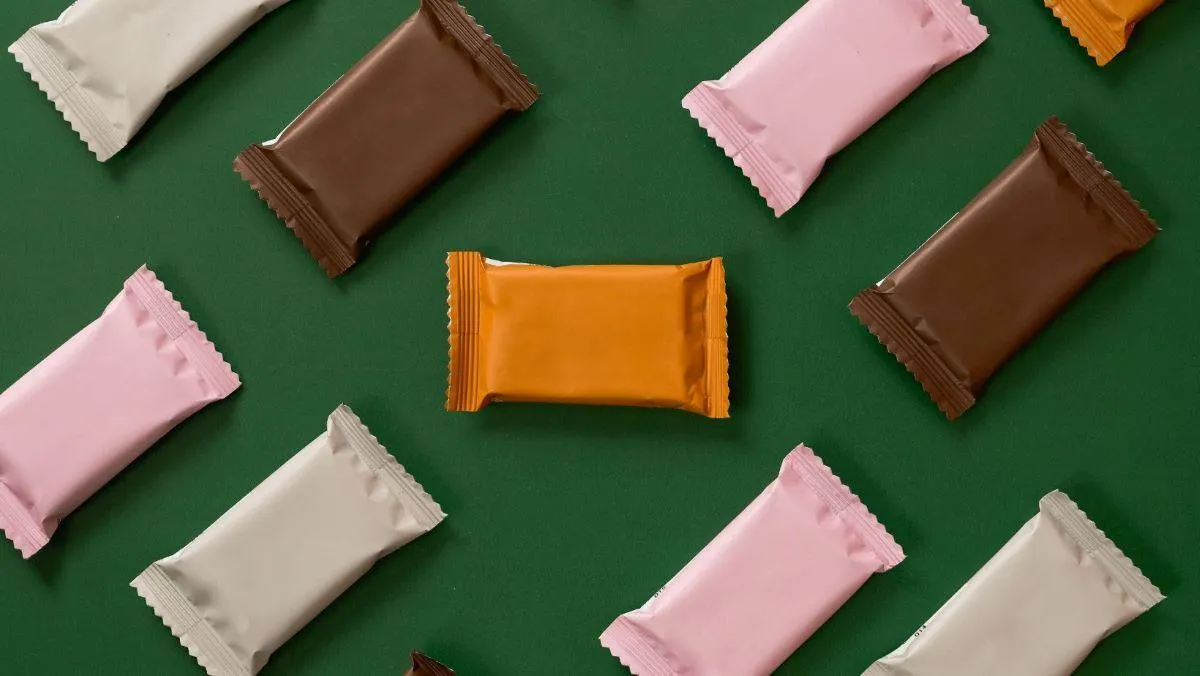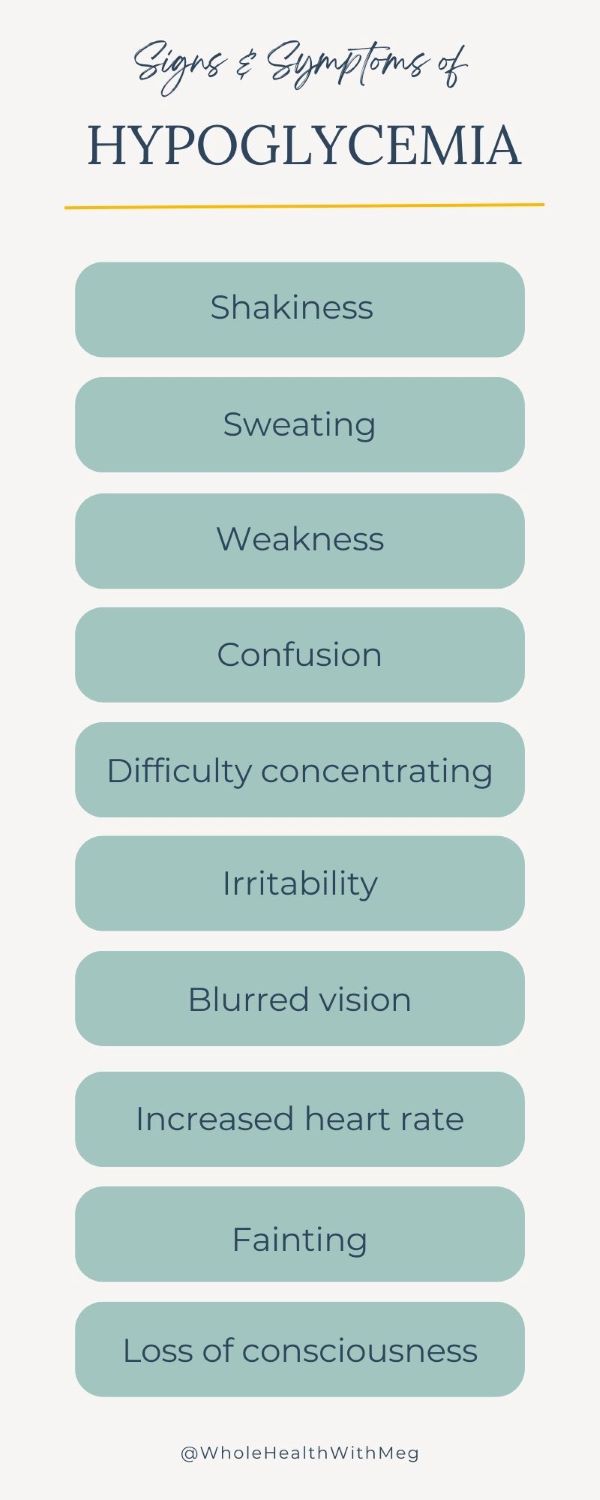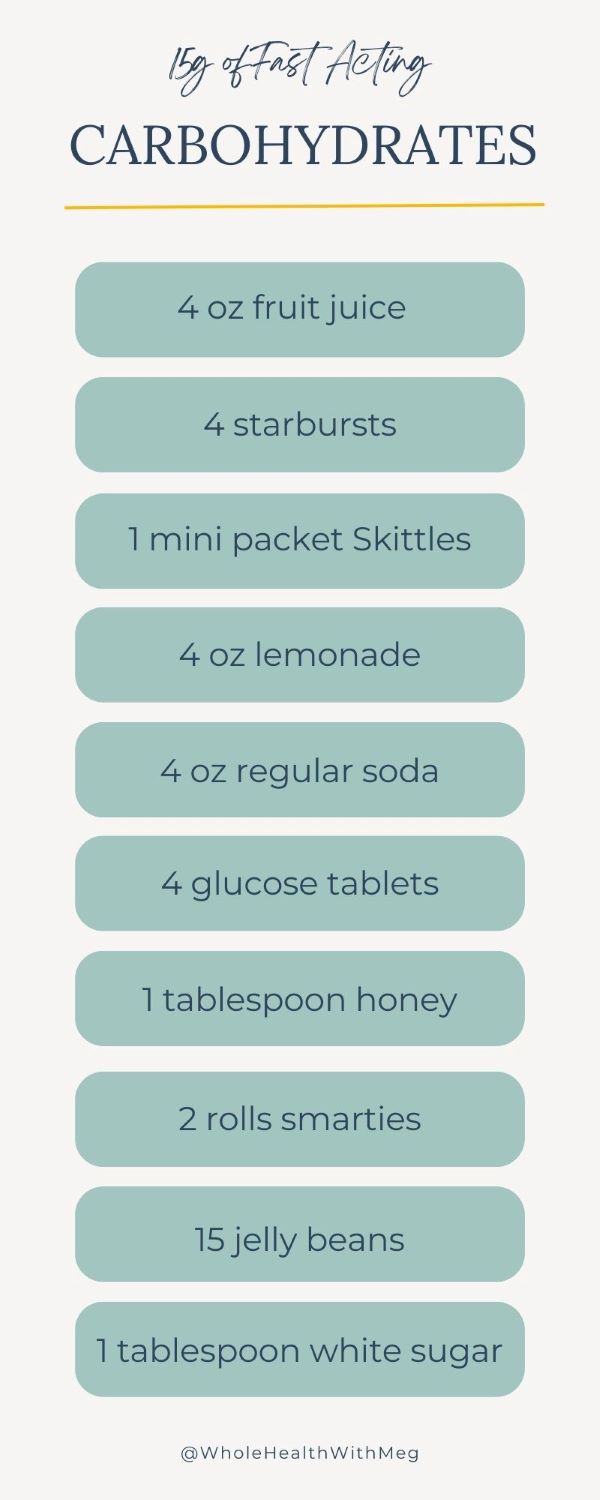
How To Raise Blood Sugar: Preventing Hypoglycemia Symptoms
Have you ever experienced warning signs of low blood sugar?
Low blood sugar or hypoglycemia can leave you feeling drained, weak, fatigued and so much more. Temporary dips in blood sugar levels may seem minor but eventually can lead to severe complications.
Keep reading to discover effective ways to raise blood sugar levels safely and learn how to prevent hypoglycemia symptoms.
This blog will allow you to empower yourself with practical strategies and expert tips to achieve optimal blood sugar control!
What is Hypoglycemia (Low Blood Sugar)?
Hypoglycemia or low blood sugar is a condition when the amount of glucose in the blood is below the normal blood sugar range.
A normal blood sugar range for an adult with diabetes is 80 to 130 mg/dL when fasted and under 180 mg/dL after 2 hours of eating.
Without diabetes, the target range is under 99 mg/dL when fasted and under 140 mg/dL after 2 hours of eating.
When blood sugar levels drop below 70 mg/dL, individuals with and without diabetes can start to experience symptoms of hypoglycemia, ranging from mild to severe.

Low Blood Sugar Symptoms
There are various symptoms that can arise with hypoglycemia. Mild symptoms can include:
Shakiness
Sweating
Weakness
Confusion
Difficulty concentrating
Irritability
Blurred vision
Increased heart rate
Severe Symptoms
In severe cases, one can lose consciousness or experience fainting or seizures as a result of low blood sugars.
What are the Causes of Hypoglycemia?
Common causes of low blood sugar include skipping meals, restricting carbohydrate intake, prolonged physical activity without proper fueling, medication side effects and excessive alcohol consumption.
Specifically for individuals with diabetes, hypoglycemia can result from taking excess insulin or other diabetes medications, inadequate carbohydrate intake related to medication dosage, interactions with other medications or extended periods of time without carbohydrate intake.
It is important to work closely with your diabetes care team to identify the root cause of hypoglycemia and develop a personalized plan to prevent episodes of low blood sugar.
What Happens if you don’t Treat Hypoglycemia?
In the short-term, you can experience any of the warning signs and symptoms listed above. You may experience a single sign or multiple symptoms depending on the circumstances.
Unfortunately, there are long-term complications of recurrent episodes of low blood sugar such as seizures, coma or potentially death.
Be mindful that over time you can develop hypoglycemia unawareness. This is a state when you are unable to identify when blood sugars go low.
Tools such as glucose meters and continuous glucose monitors can be extremely helpful before this occurs.
The insights of these two devices can alert you when levels are low while also teaching you to recognize when you are trending downward to prevent this state of unawareness.
How To Raise Blood Sugars
There are both medical interventions and foods that can raise blood sugars.
You should always continue medication(s) prescribed by your doctor until an appropriate approach has been determined to adjust medication(s).
Foods that raise your blood sugar immediately are fast acting carbohydrates. These foods are also known as simple carbohydrates because they are quickly digested and converted into energy.
When treating hypoglycemia, keep the 15-15 rule at top of mind.
You should consume 15 grams of carbohydrates then recheck blood sugars and evaluate symptoms in 15 minutes. If blood sugars remain below 70 mg/dL or you are still experiencing symptoms, repeat the 15-15 rule.
What Foods Raise Blood Sugar Quickly
Below you will have a list of fast acting carbohydrates that you can keep on hand for emergency situations. Each one contains approximately 15 grams of carbohydrates.
Fast Acting Carbohydrates
4 oz fruit juice
4 starbursts
1 mini packet of Skittles
4 oz lemonade
4 oz regular soda
4 glucose tablets
1 tablespoon honey
2 rolls smarties
15 jellybeans
1 tablespoon white sugar
Typically, we steer away from these foods when aiming to control blood sugars. However, in cases when you may be experiencing hypoglycemia symptoms, these carbohydrates are essential.

Preventing Low Blood Sugar
Ultimately, the goal should be to prevent hypoglycemia episodes.
I want to leave you with five strategies you can implement to prevent dips in blood sugar levels and stay on the path toward optimal blood sugar control.
One: Create an Awareness
Being aware of the signs, symptoms and causes of hypoglycemia is important for individuals with and without diabetes. Anyone can experience low blood sugar episodes.
Staying attuned to your body’s needs can help you significantly reduce the risk of low blood sugar. For some, eating 3 meals per day with a snack before dinner is necessary while others may need 1-2 snacks per day along with meals.
As you create an awareness of how you feel, you can make changes and enjoy stable energy and blood glucose levels throughout the day.
Two: Eat Balanced Meals
Meals packed with fat, fiber, protein and complex carbohydrates provide the appropriate fuel.
Carbohydrates will provide the body with its preferred source of energy while the protein, fat and fiber promote feelings of satiety.
This balance of nutrients also prevents rapid spikes, which often lead to subsequent blood sugar crashes.
Looking for mealtime inspiration? Add Chicken Kabobs, Mediterranean Wraps or Roasted Spaghetti Squash to the menu rotation this week!
Three: Be Mindful of Meal Times
I hear from clients way too often that they “forget to eat” or “didn’t have time”. A critical part of blood sugar management is making time for meals.
This can be one of the biggest barriers because of the multiple meetings, appointments or commitments that fill our schedules.
Carving out time for nourishing meals is essential and can fit in even the busiest schedule!
A few favorite go-to options for busy days include a cottage cheese cup with whole grain crackers, a rice cake spread with peanut butter alongside a piece of fruit or a bag of steamed edamame.
Four: Carry Portable Snacks
If you have had a week without any calendar disturbances or last-minute commitments, raise your hand! It is unlikely that anyone has their hand up, which brings me to my next strategy.
Packing a snack.
Keeping perishable or non-perishable snacks on hand for blood sugar control is a fantastic way to prevent a hypoglycemia episode. These snacks can be kept in your fridge, purse, car or in a work desk.
Choose snacks that combine protein, healthy fat and fiber for a balanced option that keeps you sustained. You can turn to these anytime when you are experiencing hunger outside of mealtimes.
Five: Educate Family and Friends
Diabetes is not meant to be tackled alone. In fact, I believe you should have an army that is supporting you as you navigate your journey.
Educating your friends and family on how to identify symptoms of hypoglycemia can raise awareness and allow your loved ones to help you if an episode occurs.
Need a PDF of the signs and symptoms of hypoglycemia that you can share? Click HERE to have a copy sent to your inbox.
Blood Sugars Made Simple
Achieving optimal blood sugar management is possible with effective strategies and expert tips.
Whether you’re navigating prediabetes, type 2 diabetes or experiencing temporary dips in blood sugar levels, use this blog as a guide to effectively raise your blood sugar or prevent hypoglycemia altogether.
If you need additional support, book a quick (and free!) Clarity Call. Together we will build and strengthen a solid foundation to eliminate and reduce frustration around your diabetes diagnosis!